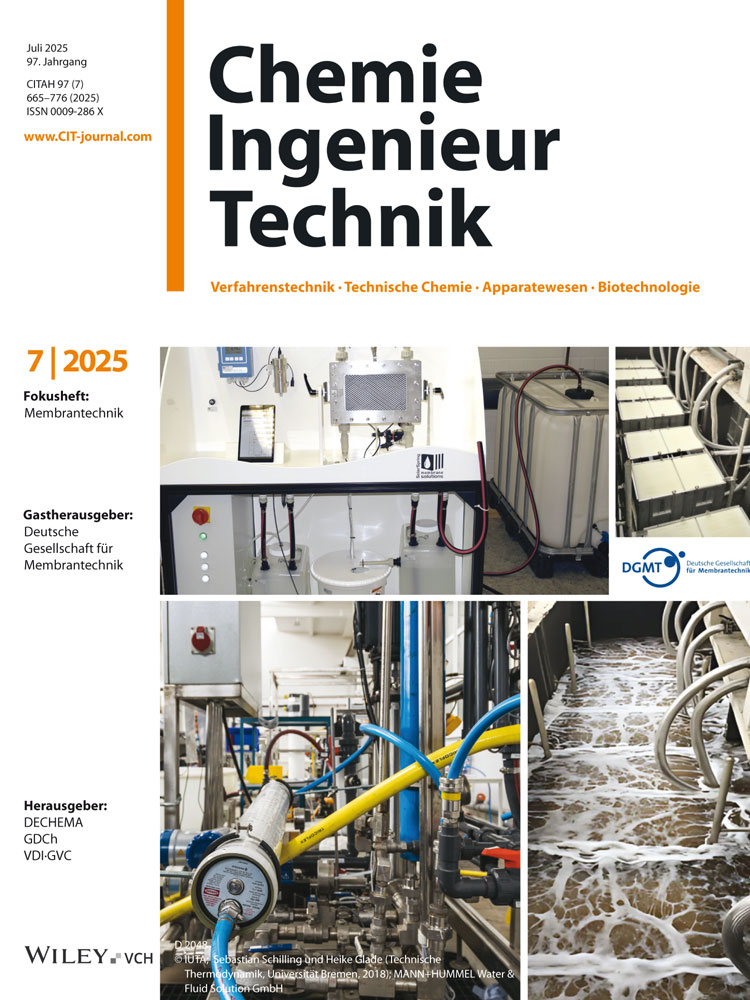Gasphasensynthese von Kern/Mantel-Partikeln am Beispiel von TiO2-Nanopartikeln mit elektrisch leitendem Mantel
Gas Phase Synthesis of Core-Shell Particles by the Example of TiO2 Nanoparticles with Conductive Shell
Abstract
deEin neuartiges Verfahren zur Herstellung von Kern/Mantel-Partikeln aus der Gasphase ermöglicht die Synthese und Ummantelung eines TiO2-Partikelkerns mit einer elektrisch leitfähigen Hülle eines transparenten Oxids in einem Reaktor. Die Ummantelung der TiO2-Partikel erfolgte mit fluordotiertem (SnO2:F) und antimondotiertem Zinn(IV)-oxid (SnO2:Sb). Die Kern/Mantel-Partikel wiesen eine spezifische Leitfähigkeit von bis zu 8 · 10–3 S cm–1 auf. Durch Variation von Prozessparametern können Dotierungsgrad und die elektrische Leitfähigkeit der Mantelschichten auf einfache Weise modifiziert werden.
Abstract
enAn advanced process enables synthesis and coating of individual TiO2-core particles with a shell of transparent conducting oxide (TCO) from the gas phase in one reactor. TiO2 particles were coated with fluorine-doped tin oxide (SnO2:F) or antimony-doped tin oxide (SnO2:Sb). Specific electrical conductivity of the core/shell particles was up to 8 · 10–3 S cm–1. Variation of process parameters allows modifying dopant level and conductivity in an easy way.




